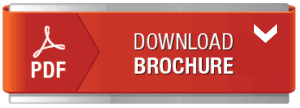
Batool Sadeghi-Nejad
Abadan School of Medical Sciences Iran
Title: In vitro Antileishmanial activity of Artemisia dracunculus and Heracleum persicum extracts in comparison with Glucantime
Biography
Biography: Batool Sadeghi-Nejad
Abstract
Background & objectives: Cutaneous leishmaniasis (CL) is one of the most common parasitic diseases. It is one of the major public health in developing countries and throughout the world. Pentavalent antimonial compounds like pentostam and glucantime has been used to treat CL for the last 50 years. The use of these compounds has some limitations such as long duration of treatment, high expenses of drugs, and methods of drug use which are intradermal and intramuscular injection. Beside these, lack of response to the treatment in 10-15% of cases and toxic effects on heart, liver, and kindneys are other possible side effects [1-3]. Hence, the objective of the present survey was to state the antileishmanial activity of two herbal medicine (Artemisia dracunculus and Heracleum persicum) extracts were evaluated against Leishmania major and Leishmania infantum using colorimetric MTT (2-(4,5-dimethyl-2-thiazolyl)-3,5-diphenyl-2H-tetrazolium bromide) assay and compared to the glucantime as a reference. Materials and Methods: The leaves extracts of selected plants were obtained by maceration. The in vitro assays were carried out on L. major and L. infantum using colorimetric MTT assay in comparison with glucantime. The concentration-response curves tested extracts and glucantime solutions were designed and IC50 values were located. Results: Anti-Leishmina effects of A. dracunculus and H. persicum) on L. major and L. infantum promastigote were revealed with 50% inhibitory concentration (IC50) values of 49.67 and 42.23 mg ml-1 for A. dracunculus , 81.15 and 73.17 mg mg ml-1 for H. persicum. In the comparison with the standard drug, glucantime, which had IC50 value of 40.2 mg ml-1 for L.major and 18.5 mg ml-1 for L. infantum promastigote after 72 hours incubation, respectively. Conclusion: These results revealed that compounds from Satureja khuzestanica and Heracleum persicum have anti-leishmania properties that necessary to survey the effects of these extracts on leishmania genus in animal models in future.

